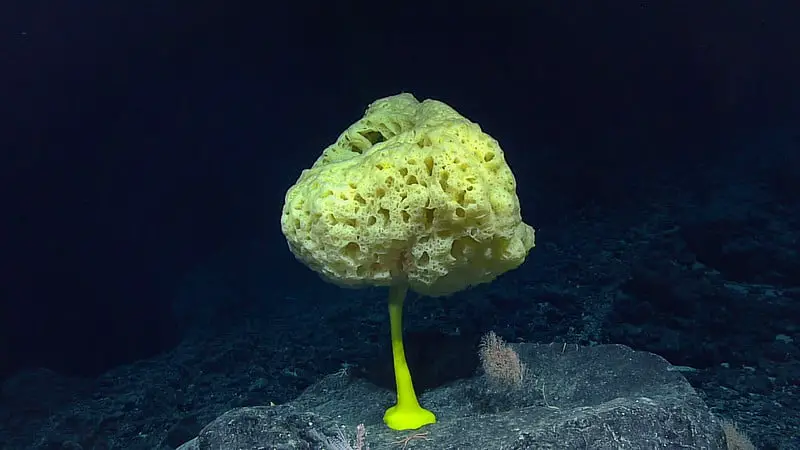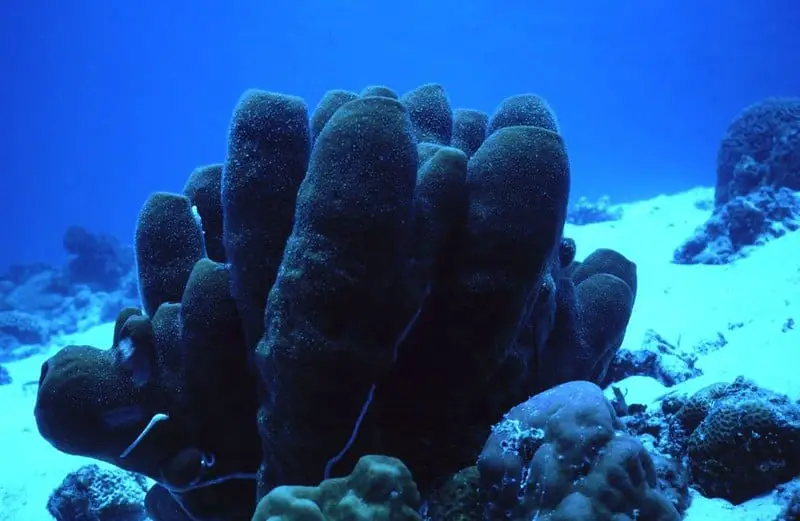Whenever I go diving, I am always amazed at the diversity in colour, shape, and size of the sponges in the ocean. It is easy to forget that they are living animals, but some species have existed before the dinosaurs.
There are four classes of sponges with over 5,000 species. They are found in all oceans and also in freshwater. They provide essential habitats and refuge to other species and are critical to food webs and biodiversity.
Sponges are complicated, but I present an introduction to their fascinating world for you.

Identification
With more than 5000 species worldwide, there is difficulty identifying many of the species. Most were named in the 19th century, and their original names are now confused, with entire families of sponges needing to be revised. Most Southern Hemisphere sponges are regularly found in southern waters and not found elsewhere.
There is not much information known about the sponges of the Indo-West Pacific, so it is very likely that once the remaining sponges of the seas are studied, there will be dozens of new species named.
Due to the variations in shape between sponges, it isn’t straightforward to identify living sponges. The shape of a sponge depends on its environment. The same species can grow upright with long branches in deeper water or sheltered areas and small and compact in rough seas.
Reproduction
Sponges are unique as most are hermaphrodites and have male and female cells. Sponges can reproduce either sexually or asexually. Sponges shed sperm into the ocean through the exhalant oscula. The sperm is then taken in by other sponges of the same species using the inhalant Ostia. Fertilization then occurs inside, with the eggs developing into flagellated larvae.
Once developed, larvae leave through a pore before settling on the sea’s bottom, where they develop into a new colony. Any pieces that break off may also form new colonies.
Sponges are one of the first multicellular animals and can be traced back to the Precambrian era through their fossils. Although simple, their primitive lives have been found throughout temperate and tropical seas, and there are over 5000 species worldwide.
Sea gooseberries may sound like fruit, but they are actually animals. Find out more here
Skeleton
Most sponges have a fibrous skeleton made up of a keratin-type substance. This substance is called spongin and is only found in sponges. One of the reasons you can find the skeletons of sponges on beaches is that spongin does not break down or decompose quickly.
The skeletons contain spicules which are small skeletal parts embedded in patterns or sporadically. The spicules give scientists clues when studying the structures under microscopes to identify the different types.
The spicules of the Demospongia are made of silica, while the Calcarea (calcareous sponges) and lime makes up Hexactinellida (glass sponges.)
Anatomy
The anatomy of a sponge is hugely complex. They are perforated by inhalant pores called Ostia and one or more exhalant pores called Ostia. The Ostia leads to the oscula by channels passing through the tissue.
The channels are lined by collar cells due to their microscopic shape. The collar cell has a single flagellum that beats. This drives a stream of water through the sponge’s body from the Ostia to the oscula. The collar has tiny protoplasmic extensions that trap food fragments, allowing them to feed.
Octopus have amazing senses – Find out more in this article I wrote

Behaviour
Sponges are attached to the substrate, most preferring the hard surface, while others attach themselves to the soft bottom of the mud or sand. Others live on the valves of scallops, or sea squirts, while others will live in the holes in rocks and shells.
Sponges that grow in the shade will often be a different colour to those in areas of sunlight. Sponges can be found in caves, and divers are often surprised to see the bright colours when emerging in caves.
Respiration
The water stream driven by the movement of the flagella allows the sponge to breathe. The water stream supplies oxygen and removes carbon dioxide. Even a tiny sponge can filter its body volume every four to twenty seconds, or up to 4000 litres in one day.
The world’s tropical seas are home to many specific shapes and much more easily recognized sponges, but the shape, colour, and size are much more diverse in temperate waters.
Classes of sponge
There are four classes of sponges: Calcareous sponges (Calcarea), glass sponges (Hexactinellida), demosponges (Demospongiae), and encrusting sponges (Homoscleromorpha).
Calcareous sponges (Calcarea)
Calcareous sponges are cellular sponges, with most species having three-pointed spicules, although some have two or four. The spicules are composed of calcium carbonate.
Most can be found in shallow tropical waters and are classed as filter feeders. Although some species can have bright colours, calcareous sponges can be identified by their colour, usually more drab than other sponges.
Calcareous sponges are some of the oldest, dating back to the Cambrian and Cretaceous periods.
Glass sponges (Hexactinellida)
Hexactinellida is known as glass sponges due to their glass-like skeleton. They can be found at depths up to 900 meters and throughout all oceans, although mainly in the Northern Pacific and Antarctic waters.
They grow in a cup-shaped pattern which spicules made of silica. Some species create extensive reefs, although these were thought extinct until they were found on the western Canadian continental shelf.
Glass sponges are one of the longest living animals on Earth, with scientists believing that some live as long as 15,000 years.
Demosponges (Demospongiae)
Demosponges are the most diverse group on this list and account for over 75% of all living sponges. They have a giant skeleton that is covered with a soft body.
The spicules consist of spongin, silica, or both. While most sponges are found in oceans and seas, one order is found in freshwater. Demosponges are some of the largest sponges, with some measuring up to 1 meter across.
Encrusting sponges (Homosclerophorida)
Homosclerophorida is the newest sponge class and is thought to include over 115 species. Homosclerophorida is the largest sponges and is encrusting in style. They are simple in their design with slight variations in the spicule.
They can be found at shallow depths and in shady areas such as caves and under-hanging rocks. They are stationary and are classed as suspension feeders.

